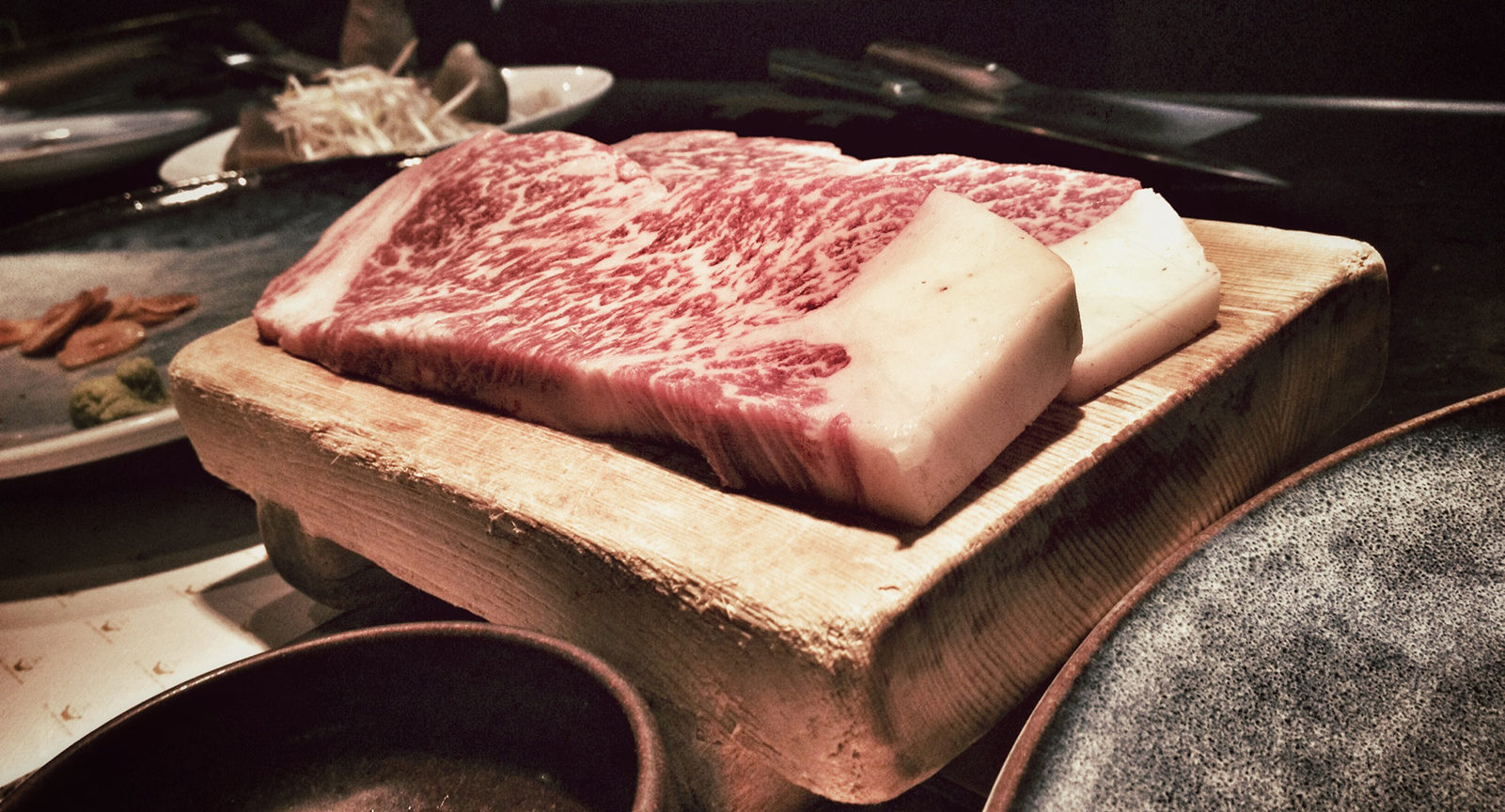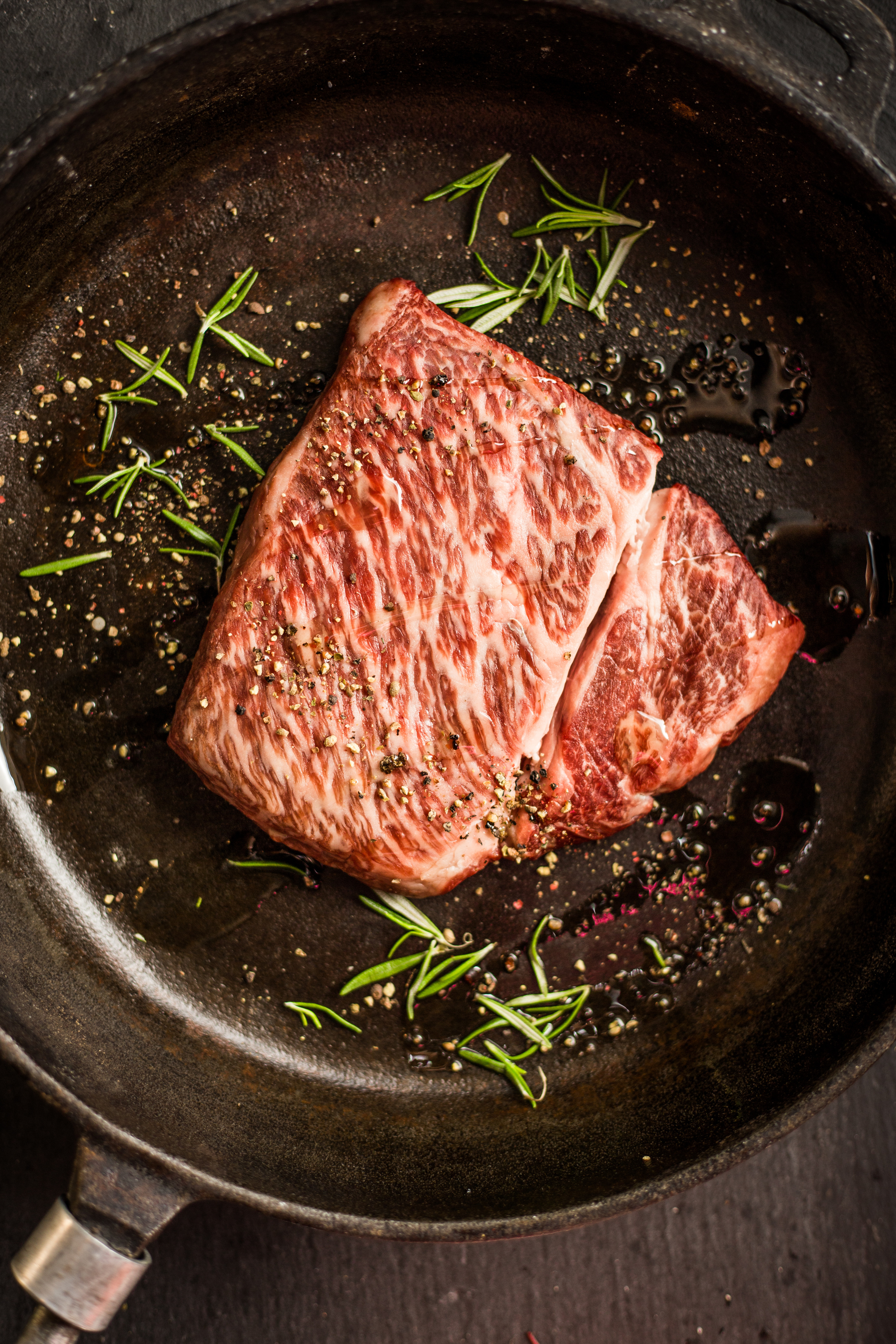
Grading Wagyu Beef
A brief description based on the Japanese Wagyu grading system is as follows. This will include the quality or grading, marbling, texture, and coloring of the meat.
Cultivated Grading essentially is the standard set to review carcass (the proportion of meat obtained from a certain part of cattle body).
According to the yield grade, score A, B or C is determined.
Grade A: above standard
Grade B: standard
Grade C: below standard
Marbling is the intermingling of fat in the beef. In Japanese, “SASHI”. Marbling is categorized into five grades. (The larger the number, the higher the grade. 5 is the largest and the highest.) Furthermore, these five grades are ranked from No.1 to 12 by BMS (Beef Marbling Standard).
Grade BMS Number
5: Excellent 8 – 12
4: Good 5 – 7
3: Average 3 – 4
2: Below average 2
1: Poor 1
Beef color and brightness are reviewed by visual appraisal.
5: Excellent
4: Good
3: Average
2: Below average
1: Poor
Firmness and texture of beef are also reviewed by visual appraisal.
5: Excellent
4: Good
3: Average
2: Below average
1: Poor
The color, sheen, and quality of fat is reviewed by the beef fat color standards, while
review of luster and quality of fat is by visual appraisal.
5: Excellent
4: Good
3: Average
2: Below average
1: Poor
The grade of beef is categorized along the standards of cultivated grade and quality grade. The cultivated grading or yield grading refers to the ratio of meat to the total weight of the carcass and is categorized into 3 grades from A to C, with A providing a higher yield. The
meat quality grade is categorized into five grades from 1 to 5, based on four criteria: fat marbling; the color and brightness of the meat; its firmness and texture; and the color and luster of the fat. The lowest of the four individual grades becomes the final grade allocated to the meat. A thorough grading system of 15 grades (using a combination of the two above-mentioned elements) ensures a clear indication of Wagyu meat quality and cultivated grade.
Grading Of Wagyu Beef, Further Explained
Marble Score 3 and 4
Even at the lower end of the marble spectrum, Wagyu beef is far more tender and delicious than the standard grocery store beef, and rates higher even than prime grade steak. MS3 and MS4 Wagyu beef is marbled with light streaks of white fat. With its soft texture and mouthwatering taste, this meat is great value considering the high quality of the eating experience, and is the perfect place to start if you’re new to the world of Wagyu.
Marble Score 5 and 6
Wagyu steaks get richer and more flavorful, with prominent fat webbing resulting in a creamier, more buttery bite than the lower marble scores. Nevertheless, you can indulge in large portions without the risk of a richness overload.
Marble Score 7 and 8
This level of Wagyu is like having a gorgeous rambling stream of fat that is so thick and succulent, that your Wagyu reaches a higher culinary plain, one historically reserved for kings. Rich and succulent to the point of decadence, and so tender your knife slices through it like butter, this is the kind of beef that will change your definition of amazing. Since it’s so rich and buttery, savor it in slightly smaller portions than normal.
Marble Score 9+
Welcome. You just crossed beef heaven and now stand in whatever lies beyond it. These are the rarest and most difficult to find marble scores, found on less than 1% of Wagyu cows. With luscious, exquisitely marbled meat that will impress even the most discerning of connoisseurs, Wagyu MS9+ is serious meat that dreams are made of. So much so, in fact, that it should be savored in small portions, around half the size of a regular serving of steak. Purchase it for the most special of occasions, or as a gift when you want to wow someone and show them the true meaning of luxury.

